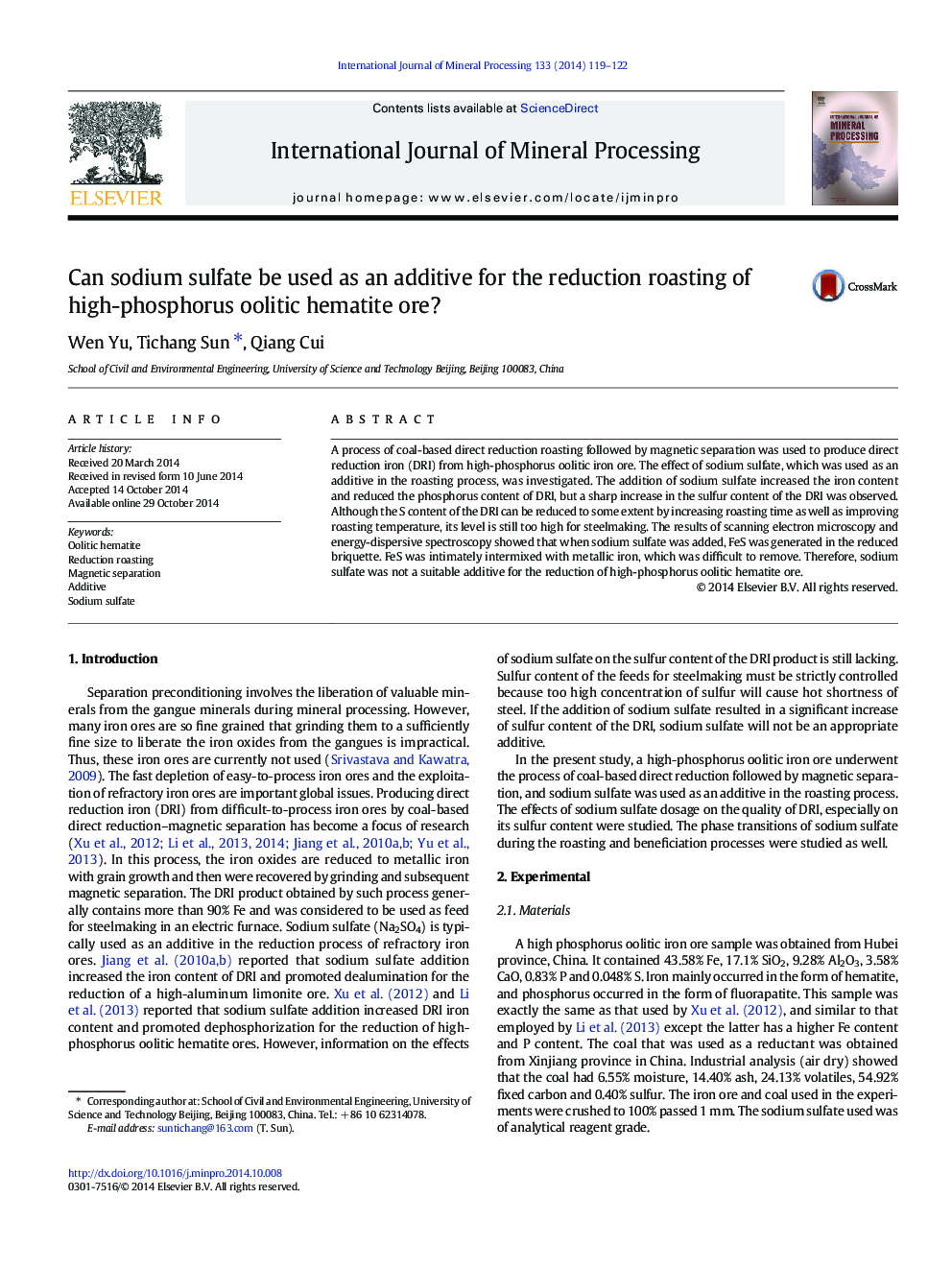| کد مقاله | کد نشریه | سال انتشار | مقاله انگلیسی | نسخه تمام متن |
|---|---|---|---|---|
| 213883 | 1425800 | 2014 | 4 صفحه PDF | دانلود رایگان |
• A high-phosphorus iron ore was treated by coal-based reduction–magnetic separation.
• Sodium sulfate addition increased the sulfate content of the DRI.
• FeS was generated in the reduced briquette when sodium sulfate was added.
• Sodium sulfate is not a suitable additive for reducing high-phosphorus iron ore.
A process of coal-based direct reduction roasting followed by magnetic separation was used to produce direct reduction iron (DRI) from high-phosphorus oolitic iron ore. The effect of sodium sulfate, which was used as an additive in the roasting process, was investigated. The addition of sodium sulfate increased the iron content and reduced the phosphorus content of DRI, but a sharp increase in the sulfur content of the DRI was observed. Although the S content of the DRI can be reduced to some extent by increasing roasting time as well as improving roasting temperature, its level is still too high for steelmaking. The results of scanning electron microscopy and energy-dispersive spectroscopy showed that when sodium sulfate was added, FeS was generated in the reduced briquette. FeS was intimately intermixed with metallic iron, which was difficult to remove. Therefore, sodium sulfate was not a suitable additive for the reduction of high-phosphorus oolitic hematite ore.
Journal: International Journal of Mineral Processing - Volume 133, 10 December 2014, Pages 119–122
